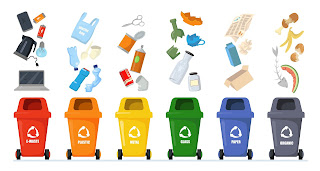New Recycling Trends Reshaping the Way We Manage Waste
As the global waste crisis grows more urgent, the way we think about recycling is changing rapidly. Gone are the days when recycling meant simply tossing bottles and cans into a blue bin. Today, new recycling trends are emerging that are smarter, more efficient, and more connected to sustainability goals. From innovative technologies to new business models, these trends are transforming how we reuse materials and reduce our environmental footprint.
1. AI-Powered Waste Management
Artificial intelligence is revolutionizing recycling operations. AI-powered sensors and robotic arms can now identify, sort, and separate recyclables with incredible accuracy. These technologies reduce contamination in recycling streams and improve processing efficiency. Some facilities are even using machine learning to continuously refine their sorting capabilities, creating a self-improving system that adapts to changing materials.
2. Digital Incentives and Gamification
To increase participation in recycling programs, cities and private companies are turning to digital rewards and gamification. Mobile apps allow users to scan items, track their recycling habits, and earn points or perks for responsible behavior. These tools are especially effective with younger audiences and in urban areas, helping to close the gap between awareness and action.
3. Recyclable Packaging Innovations
Packaging is a major source of waste, but that’s starting to change. Companies are now investing in packaging that’s easier to recycle or made from single materials. Mono-material packaging, which uses only one type of plastic or fiber, simplifies recycling and improves material recovery rates. Other companies are embracing reusable or refillable packaging models to minimize single-use waste altogether.
4. Textile Recycling Goes Mainstream
With fast fashion under scrutiny, textile recycling is finally gaining traction. New technologies can break down fabrics into raw fibers, which are then re-spun into new garments. Some systems can even separate blended fabrics like cotton-polyester—a major breakthrough in sustainable fashion. Brands are launching take-back programs, and consumers are increasingly seeking out clothing made from recycled textiles.
5. On-Demand Recycling Services
As convenience becomes a top priority, on-demand recycling services are growing in popularity. Much like food delivery apps, these platforms let users schedule pickups for electronics, textiles, batteries, and other hard-to-recycle items. These services help close the accessibility gap and ensure more materials are diverted from landfills.
6. Global Focus on Circular Design
A more holistic shift is underway in product design itself. Companies are adopting circular design principles, which prioritize durability, repairability, and recyclability from the start. By designing with end-of-life in mind, products become easier to disassemble, reuse, or recycle—supporting a circular economy rather than a linear one.
SwagCycle’s Role in Responsible Swag Disposal
As companies face growing pressure to reduce waste and act on sustainability goals, even promotional merchandise is under the spotlight. Branded swag often goes unused or ends up in landfills—but it doesn’t have to. SwagCycle offers a sustainable solution by helping organizations recycle, repurpose, or donate excess promotional products. By aligning with today’s new recycling trends, SwagCycle ensures that branded items don’t go to waste, but instead find new purpose in a more sustainable world.




Comments
Post a Comment